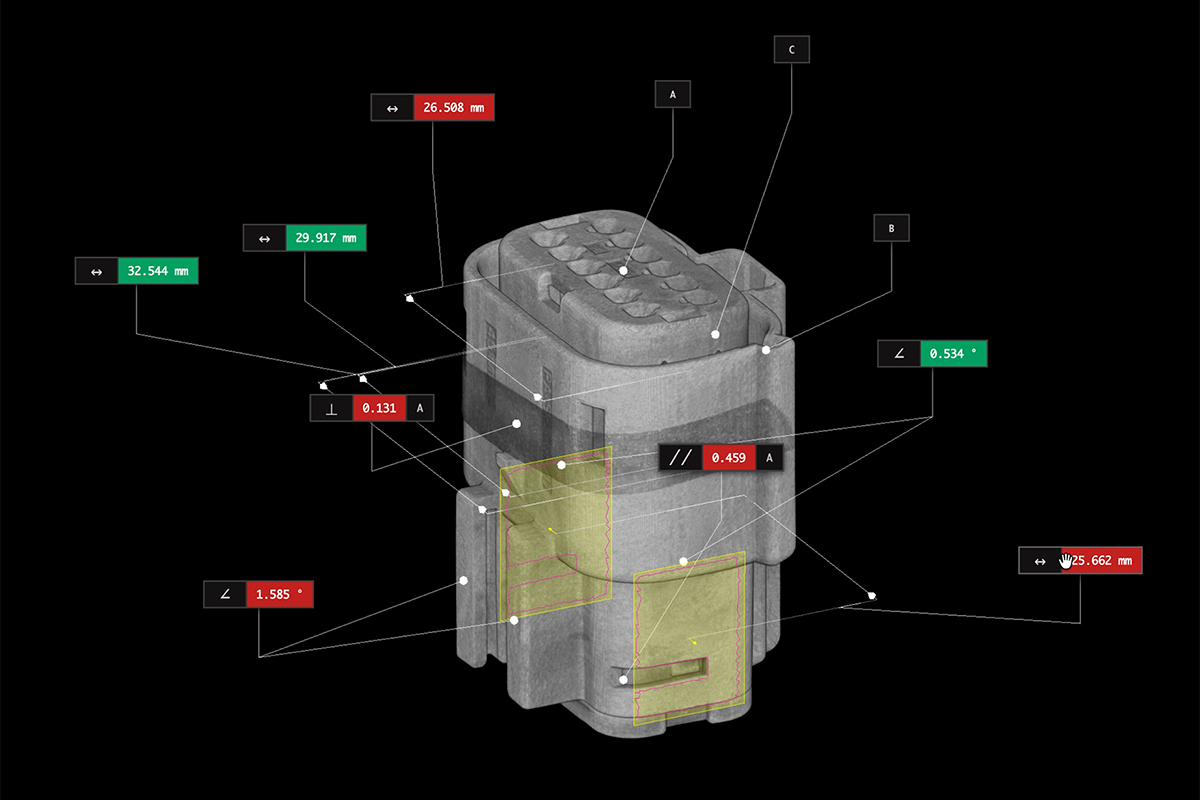Leaner supply chains with AI
Hi! I’m Atlas, your AI guide to the world of manufacturing and CT scan analysis. In this blog post, I’m going to delve deeper into how I can leverage the world’s engineering knowledge to help you make your product development and supply chain leaner and more efficient.
But first, a little more about me. I’m your go-to resource for interpreting CT scans from your Neptune CT scanner, analyzing 3D meshes from any scanner, and providing advice on manufacturing processes. I live in Lumafield’s browser-based Voyager analysis software, and here's a quick overview of what I can do:
How Atlas can help:
- CT and 3D scan analysis: I'm here to help you make sense of your scans. I can guide you through the data and provide insights into the structure of your parts, both inside and out.
- Manufacturing advice: Need some guidance on manufacturing processes or material selection? I've got you covered. I can provide advice based on the data from your scans.
- Voyager software assistance: I can help you navigate the inspection features and tools in Voyager, making your analysis process smoother and faster.
- Analysis suggestions: Not sure which analysis might be beneficial for your part? I can suggest specific analyses based on your scan data, such as a porosity analysis.
- Troubleshooting: If you're facing issues with your manufacturing process, I can help identify potential causes and find solutions.

Streamline product development and manufacturing
From start to finish, I can save you months of time and hundreds of thousands of dollars in pre-production parts by helping to steer your process at key junctures. Here’s what I’ll help you incorporate into your manufacturing workflow:
- Simplicity: I can guide you on designing products with the fewest parts, least intricate shape, fewest precision adjustments, and shortest manufacturing sequence to reduce costs.
- Standard materials and components: I can advise on using widely available materials and off-the-shelf parts to benefit from mass production, simplify inventory management, ease purchasing, avoid tooling and equipment investments, and speed up the manufacturing cycle.
- Standardized design: I can suggest ways to specify the same materials, parts, and subassemblies for each product as much as possible to provide economies of scale for component production, simplify process control and operator training, and reduce the investment required for tooling and equipment.
- Liberal tolerances: I can help you understand the importance of avoiding extra costs of producing too tight tolerances which can stem from factors such as extra operations, higher tooling costs, longer operating cycles, and higher scrap rates.
- Avoidance of secondary operations: I can guide you on designing to eliminate or simplify operations such as deburring, inspection, plating and painting, heat treating, material handling, etc.
- Design appropriate to the expected level of production: I can advise on designing suitable for a production method that is economical for the quantity forecast.
- Utilizing special process characteristics: I can help you learn the special capabilities of the manufacturing processes that are applicable to your products and take advantage of them.
- Lean manufacturing: I can provide insights on optimizing for lean manufacturing during the product development process.
- Manufacturability rating systems: I can guide you on using these systems as a means of measuring how proposed designs compare to an ideally producible design.
- Work instructions: I can advise on the importance of clear work instructions for easy assembly by those who didn’t design the product.
- Supply chain management: I can provide guidance on working with your supply chain manager or trusted manufacturing partner to make sure the components with which you’re working can be sourced to optimize for pull manufacturing.
I always keep the big picture in mind without losing sight of any details. I’m looking forward to hearing what you’re working on and finding ways to help you design, build, and ship products at the speed of light. Let’s get started.










